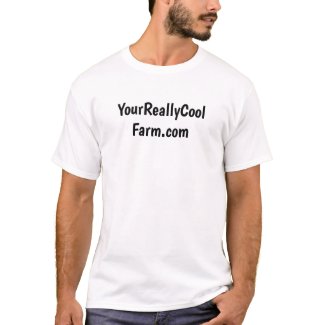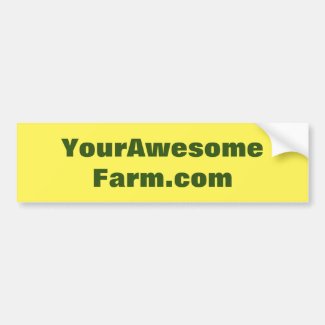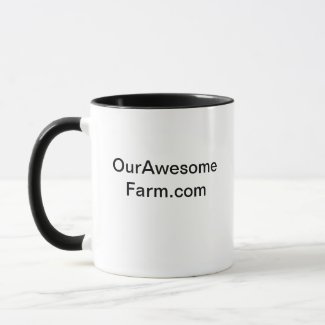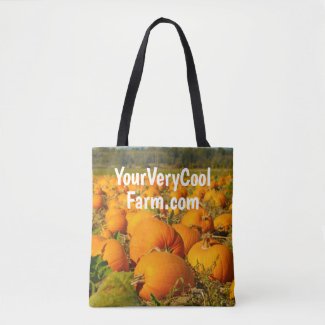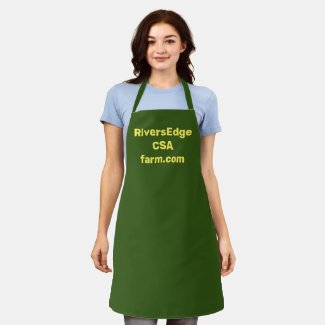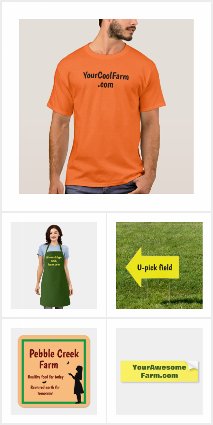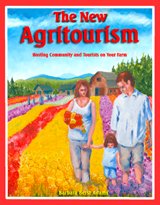Lavender farm succeeds with unique marketing strategy and agritourism
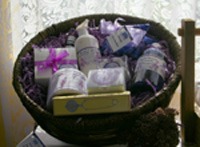 Display of Lavender Wind's products in the on-farm store
Display of Lavender Wind's products in the on-farm storeA version of this article by Barbara Berst Adams first appeared in Acres USA Magazine. Text and photos copyright National Lilac Publishing, LLC
It was a breezy blue-sky day when my husband and I visited Lavender Wind Farm, a certified organic 8.75-acre lavender farm on one of Washington State’s evergreen islands. The owner, Sarah Richards, who was gradually filling her acreage with her chosen lavender varieties, uses the system of vertical product expansion more than horizontal expansion to help the farm revenue reach its goal.
In other words, Sarah stacks her lavender crop and farm with a diversity of many value-added products and agritourism activities rather than simply spreading out to more and more territory growing a single-variety lavender for wholesale. The value-added products and services range from a unique product called a “piano tube” (explained below), and an on-farm lavender labyrinth for agritourism guests.
“My ultimate hopes are to have this be a significant income for
me as well as for my staff,” Sarah said. “This is not a hobby
operation.” And each year, she got closer to her goal. “This farm is (currently) a
major source of income for three employees who are employed almost full
time. I still experience red-ink in this business. But, each year our
gross income grows."
Location: Historical Farmland Reserve
Lavender
Wind Farm is located on Whidbey Island in Washington. Visitors can
access this island by ferry and bridge. Though this very long island has
many micro climates, the farm’s exact location receives about 18 inches
of rain a year, plenty of sun and lots of wind. Perfect growing
conditions, according to Sarah, for healthy crops of lavender. The soil
was originally rich prairie land, a valuable loam Sarah recognized
immediately when first looking at the property.
But
along with taking advantage of near perfect growing conditions for
lavender, Sarah is also tapping into her property’s unique situation to
attract visitors to the farm. The land is part of a national historical
reserve, reportedly the first of its kind, set aside by Congress nearly
30 years ago to preserve and protect a rural community. Its intention is
to “protect what is timeless while accommodating change.” Various
working farms and other historical and rural enterprises thrive here,
and buildings as old as 100 years are preserved and given new life as
homes or businesses. Most of the land is privately owned, and it retains
its historic landscape with the help of the reserve’s trust board,
which makes sure the land is used in a way to ensure historic and
natural resources are protected.
With
a location like this to help attract visitors, Sarah not only sells to
locals and various retail outlets, she also sells to agritourists who
visit the island and farm.
The making of the farm
“I
didn't buy the land with the idea of a lavender farm in mind,” says
Sarah, “though the field we bought had been farmed for over 100
years. Turning the land into fields has been a slow, evolving process. I
(first) bought a 5-acre piece, of which maybe four of the acres were a
hayfield, the rest in woods. The soil is sandy loam and doesn't need
much amending, if any, at all. The reality of a lavender farm slowly
grew and took over the place.
“After
buying the hayfield, we built the house and garage, and I started the
first lavender field. I covered a small section with black plastic to
kill the grasses and weeds underneath. The plastic stayed in place for
about four months over the first summer after the house was complete.”
Sarah
hadn’t yet felt the need to amend her soil to a large degree.
“Sometimes,” she explains, “we put some lime around the drip line of the
plants, but not every year. And we do when we first plant them. This is
great soil, and the crop is perennial, so we don't have to do much.
Lavender thrives in adversity and neglect, don't forget its native
habitat is the harsh chalky cliffs of the Mediterranean. We will be
branching out with other herbs and a few vegetable crops. At that point
we will analyze the soil to see what it needs. So far, in our small
garden areas we can get by with our own compost and mulch.”
Products
Sarah and her crew produce a treasury of lavender products. They include live lavender nursery plants, sachets, lavender wands, lavender-scented goats’ milk soap, hand lotion, gardener's hand cream, lavender cleanser, Herbs de Provence, lavender spritzer, fruit and lavender jelly and jam, eye pillows, honey, cookies, muscle soothers, massage oil, lavender shampoo, dried lavender bunches, wreaths, and dried lavender for cooking and crafting. Some of the culinary lavender is made into mixes such as a lavender lemon shortbread mix and a lavender chocolate chip scone mix. The farm’s most unusual product is something called a lavender “piano tube” which is meant to be placed inside a piano to keep mice away.
Product Markets
Sarah’s
diversified marketing strategy is a perfect example of market variety,
and tapping into local niche outlets. Lavender Wind products can be
purchased online, direct from the farm, or at a growing number of
festivals and retail outlets. For example, the farm’s products are part
of the Uniquely Whidbey Trade Fair, where local products, services and
foods from Whidbey Island are featured. Anna’s Tea Room, a tea house in a
nearby tourist town, serves the farm’s lavender tea and jams. Even one
of the island’s hospitals carries Lavender Wind items in their gift
shop. Other farms also carry Lavender Wind’s products. When owners of
another lavender farm from Ohio visited the farm one year, they showed
Sarah their cookbook, and she showed them her culinary lavender
products. They both now carry each others' items at their farm store.
“Lavender
and herbs are really a year around crop,” Sarah explains about her
marketing strategy. “They have their relatively short fresh season, then
they are dried. At that point they are preserved and can last for the
rest of the year. It's not like growing vegetables for market. So, we
work hard to dry and process the crop, then make the value-added
products. Getting attention is a constant struggle. There are many
little lavender farms, they are really a dime-a-dozen. Trying to make it
only on the internet with just lavender items for sale won't produce
the kinds of sales needed for slow season stability. After all, our
internet competitors are in Texas, Sequim -- Washington State,
Australia, New Zealand, Ohio, New Brunswick... with the exception of the
deep South, there's a lavender farm everywhere - even in Hawaii! So we
do a lot of marketing -- brochures, ads, articles, website, personal
phone calls. The phone calls are the hardest for all of us.
But we are constantly amazed at the reception we get. The people we
call have often heard of us and more times than not are interested and
friendly. Who knew?”
Agritourism
Agritourism
could be one of the main strategies that set lavender farms apart from
each other. “What makes each of the farms special is the place, the
people, and the feeling you have when you're there,” says Sarah. “The
products vary somewhat, so it can be fun to discover what the next farm
is doing. But, for the people who can come visit our farm we reserve the
best -- the view, the farm, and the warm welcome. These are all
available year around, even when the purple in the fields is just a
memory. We feel so lucky to be here and are glad we can share it with
others. Sounds rather hokey, but it's really how I feel. I grew up on an
island where there is so much private property that it was hard to get
to a beach in some parts. I thought that was ridiculous, so when I found
myself with a piece of property with an incredible view -- I knew I was
going to share.”
Sarah
has made her farm very attractive to farm visitors, whether they are
the product of planned visits or spontaneous stop-offs by those who see
their farm signs along the main highway.
She
had recently opened her farm up for event rental, such as for weddings.
Word of mouth generated from people stopping by for short-term reasons
can be an excellent source of future rental income. Guests stop off to
buy nursery plants, to walk the labyrinth (which is intriguing even when
the lavender isn’t in bloom, which was the case when we visited), or to browse the on-farm store. For the
summer bloom time, Sarah holds a formal event which drew more than 3000 the summer before our visit. Now named “Lavender & Wind Art Festival -- with
a Taste of Provence,” Sarah invited local artists and musicians, and
sold her own products at the event. “The festival brings a lot of
attention to the farm,” she says. “We started it to do that, plus
provide a venue for artists to sell their art. We also provide a
fundraiser for our local county extension service. We don't charge
admission, but if it gets too crowded, we will.”
Sarah
also offers a series of classes. These have included one on making your
own lotion, in which she teaches how to use a lotion base along with
chosen essential oils and colors, and a class on making lavender wands
from her farm-grown crops, and for which she also serves lavender
lemonade to the students.
The
addition of agritourism and on-farm visits evolved gradually, and weren't
free of challenges, especially when it came to children. “Having
visitors come onto the farm is an ongoing issue,” Sarah says. “Each year
we try to improve the experience. We started having a port-a-potty when
people asked to use the bathroom and I (realized I) didn't want them
coming into my house. Kids are always going to challenge us, so we now
ask them not to throw rocks in our pond. They are like little testers to
see how secure our system is. If they can find something to do that is
hurtful to themselves or our farm, they will. Usually it's minor the
first time, so we get to fix things up to take care of what they just
discovered. We work hard to make this a fun place for kids, but not in a
Disneyland sort of way. Rather, we let them see and discover the beauty
and fun stuff of nature and farming. They love our tractor (which they
can't climb on).”
But
Sarah has had enjoyable encounters with young kids as well. “There is a
language school on Whidbey, and the woman who runs it is French,” she
said. “She wanted to have a summer camp group of French students come
for a visit to the farm. So we arranged a tour for them. Several
carloads of people came with about eight kids, maybe 10. They ranged in
age from about four to nine. I'd spent a school year in southern France
when I was in college so I took them around and tried to explain it all
in French. It was a challenge. At the end, some of them helped with
screening some of the lavender, and I took a picture of their hands. I
love that picture because it reminds me of the importance of all of us
working together and that we are all from various backgrounds.”
Hired help
As
mentioned, Sarah employed three people full time. But during the
summer, about nine people work the fields, help make products such as
wreathes, care for the nursery and staff the shop.
“The
transition into hiring employees came slowly,” Sarah says. “I started
with just me and occasional friend volunteers doing the work. In my
second year I realized I wouldn't be able to do it all myself, but was
uneasy about committing to employees who would be dependent on the farm
to any significant degree. So, I found a high school girl who was an
excellent worker and we both trained each other. I'd not had employees
when she arrived and was frightened by the thought of dealing with any.
But she had a great work ethic and she loved people and was charming to
the people who came by or who came to our booth at the farmers market.
This combination of hard work and pleasant attitude raised my
expectations. I learned how to guide her and listen to her ideas.”
The
next couple of years I hired more high school kids to work. Some of
them were really great, some were problems. Since I like kids, it was
good either way because I felt I was able to help both kinds of kids.”
Sarah
also tried using contract labor organizations as a source of crews to
weed the fields. She said they were very good workers, but now that the
farm’s revenue has grown, she’d stopped using them because she has now
committed to employing the three workers full time, and she uses them to
weed, which worked out for a while. But even that situation is
evolving. “Now,” she says, “I am considering a hybrid of full-time
managers and occasional weeding crews.”
Future plans
Sarah stewarded Lavender Wind Farm towards a healthy
bottom line. Each
year, they also finished the planting out of that second 3.75
additional acres purchased after the original five. “One
year our neighbors had free roaming chickens,” Sarah says. “They'd come
onto our property and roam the fields, picking out bugs and little
shoots of weeds. I loved having them there. At the same time the
sunflowers I'd carefully planted along the boundary and between some
sections of the fields weren't growing. And our honeybee guy told us to make
sure they didn't go near his hives because they'd eat the bees. So,
reluctantly, I had to ask the neighbors to fence in their yard to keep
the chickens on their own property. I hope to have a small section of
property for my own chickens someday.”
Update: Since this writing, Lavender Wind Farm has expanded by turning a quaint bungalow in the nearby historic town of Coupeville into a manufacturing kitchen and gift shop.

__________________________

